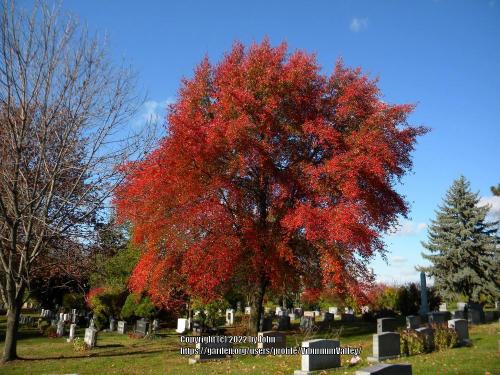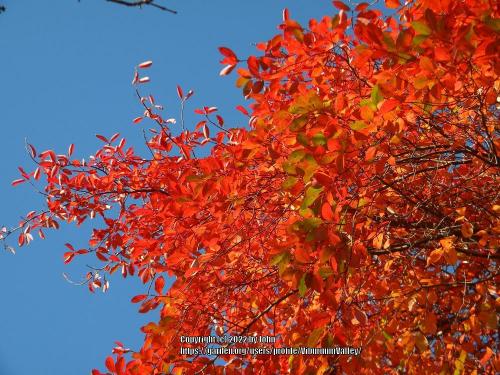Nyssa sylvatica - Blackgum - is a great tree just about anywhere it is grown. While it is native on moist to wet (to swampy) acid soils, it certainly doesn't require them.
I have had the good fortune to work for the Louisville (KY) parks department for a couple decades, and have designed with this and many other native trees around our community. We have established a grove of named selections and species at Seneca Golf Course, now numbering about 27 taxa. These are on well-drained karst limestone-based soils on high ground - a far cry from moist acid conditions - and they are perfectly happy except when mowers or weedeaters hit them. These trees planted since 2014 join several older specimens that grace the rear of Hole #2's green. You can see these on aerial views.
To answer some of your questions...
1. As for squirrels' dietary preferences (referencing Gary Hightshoe's fine 1988 text
Native Trees, Shrubs, and Vines for Urban and Rural America), Blackgum provides intermediate wildlife value to songbirds and small mammals. Personal observation is that birds will take these fruits far sooner than any small mammals in central Kentucky. Squirrels are and prefer nuts, and any seed you put out for your bird feeders. Whole YouTube videos attest to this.
2. It is possible to identify male vs. female trees
on the named selections at a small size, since the named selections are of known sex and will be flowering at about 2" caliper. I cannot speak for how soon a tree grown from seed will flower. As far as setting fruit:
Nyssa sp. are mostly
dioecious (like most
Ilex sp. and several other common species of trees) which means male flowers and female flowers occur on separate trees. You will need to plant at least one male flowered (
staminate) tree to provide pollen for any female flowered (
pistillate) trees that you plant. Fortunately, among the great named selections there are both known male and female flowered plants.
3. I wonder who the heck wrote that the fruit is messy? That's like saying the sky is too blue for my preference, or chocolate tastes too good. The fruit is small (3/8 - 1/2" long; 0.95 - 1.27 cm), and I'd much rather have this species' fruit around my patio than Mulberry or Pokeweed.
4. I have never seen Japanese Beetle feeding on this tree, but JBs can land somewhere and attract others by pheromone signals - and then there is no accounting for any subsequent frenzy. They would probably defoliate fenceposts and telephone poles when they got all hopped up on reproductive urges.
5. "Fruitless" will mean a selection that has primarily staminate (male) flowers, or a female plant that hasn't flowered (yet) or has no pollen nearby to fertilize the flowers.
You (and others here) should plant this species, and then get out of the way and let it shine.
Here is a link to all the
Nyssa entries in NGA's Plants Database. I have grown almost all the
Nyssa sylvatica selections listed, as well as quite a few others not yet posted there.
https://garden.org/plants/brow...



